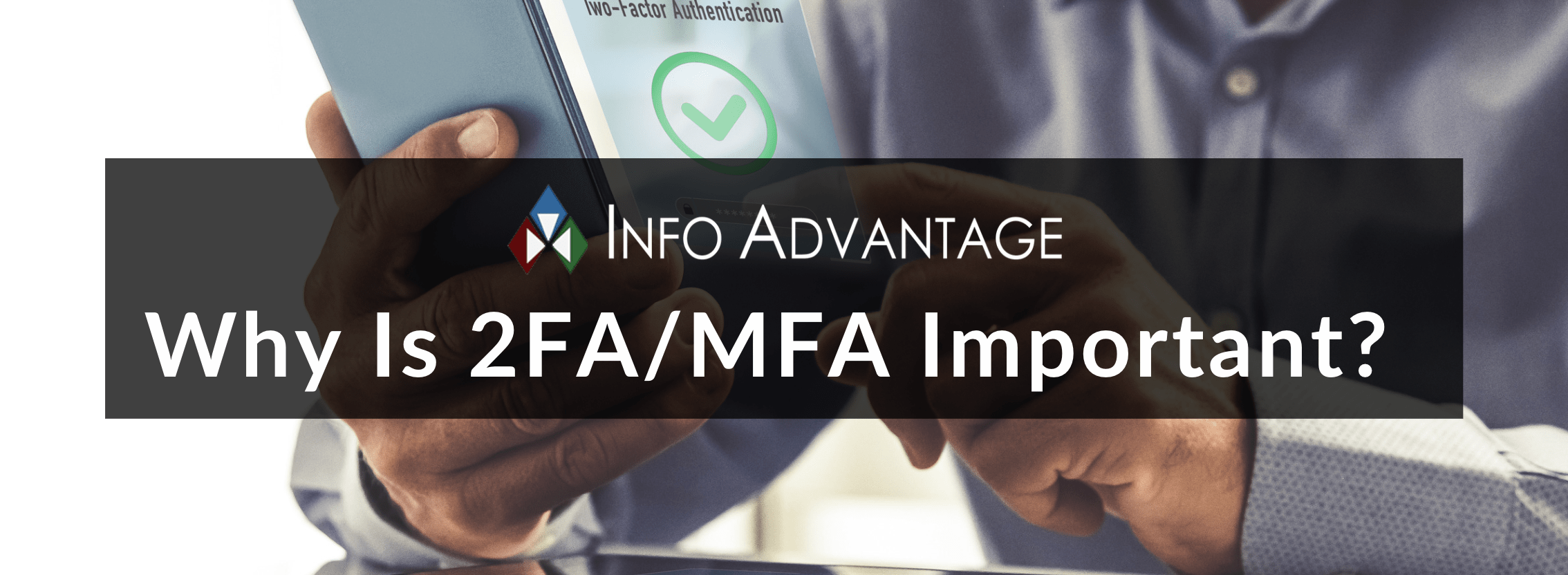Info Advantage Blog
Why Is 2FA/MFA Important?

As cybersecurity experts, we can explain why Two-Factor Authentication (2FA) or Multi-Factor Authentication (MFA) are essential components of modern cybersecurity strategies.
1. Increased Security: Traditional security measures like passwords are often vulnerable to attacks such as phishing, brute force, or social engineering. 2FA/MFA adds an additional layer of security, making it much harder for unauthorized users to gain access.
2. Mitigating Password Weakness: Many users tend to use weak or reused passwords. 2FA/MFA reduces the risk associated with weak password practices.
3. Protection Against Phishing: Even if a user is tricked into revealing their password, 2FA/MFA requires an additional verification step that a hacker is less likely to have access to.
4. Compliance Requirements: Many regulatory frameworks (like GDPR, HIPAA) now require or strongly recommend the use of 2FA/MFA to ensure better data protection.
5. Reducing Fraud and Identity Theft: By requiring multiple forms of verification, 2FA/MFA makes it significantly more difficult for attackers to impersonate users and access sensitive data.
6. Adaptive Authentication: Some MFA systems can adjust their authentication requirements based on the user's location, device, or network, enhancing security without compromising user convenience.
Examples of 2FA/MFA:
- SMS-Based Verification: A code is sent via SMS to the user’s phone after they enter their password. The user must enter this code to gain access.
- Authenticator Apps: Apps like Google Authenticator or Microsoft Authenticator generate time-based, one-time passcodes (TOTP) that users enter after their password.
- Hardware Tokens: Devices like YubiKey or RSA SecurID generate a token that the user enters after their password.
- Biometric Verification: Using fingerprints, facial recognition, or voice recognition as a second factor
- Push Notifications: A notification is sent to a trusted device, and the user approves the login attempt with a simple tap.
- Location-Based or Behavioral Factors: The system checks the user’s location or behavior patterns (like typing patterns) for authentication.
In today's digital world, where data breaches and cyber-attacks are increasingly common, relying solely on passwords for security is no longer sufficient. 2FA/MFA provides a much-needed additional layer of security that can significantly reduce the risk of unauthorized access, making it a critical component of any robust cybersecurity strategy.
Comments
Tag Cloud
Mobile? Grab this Article




